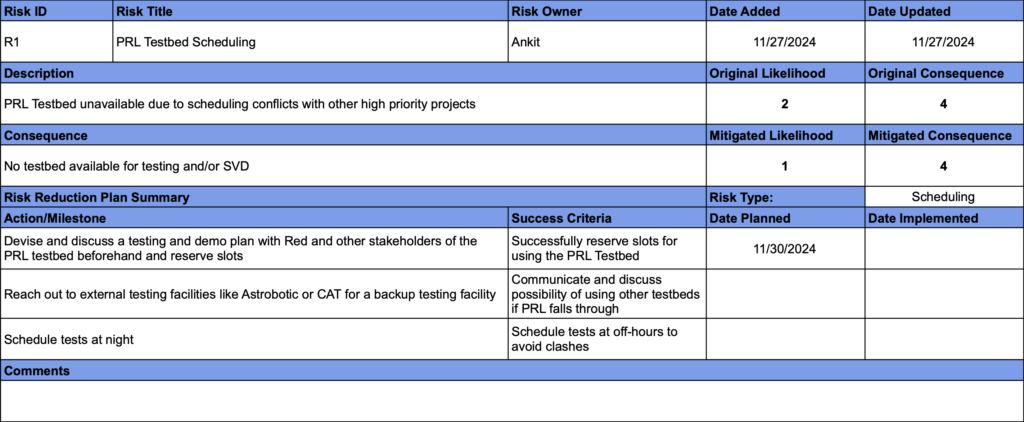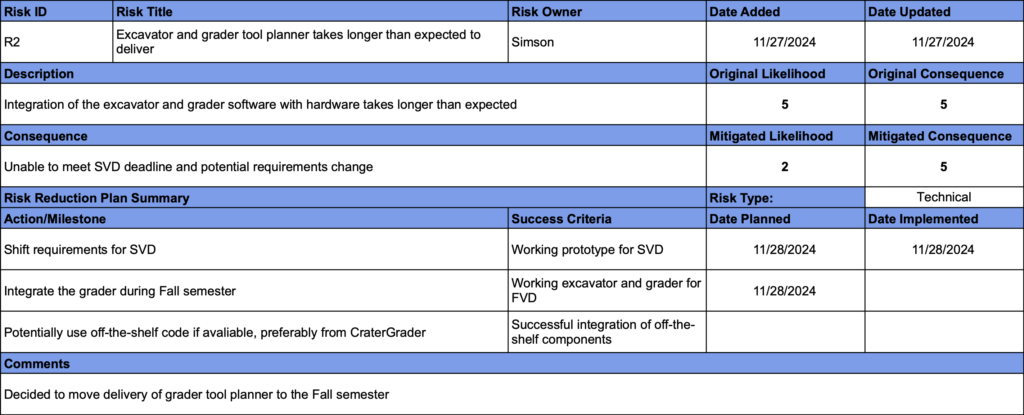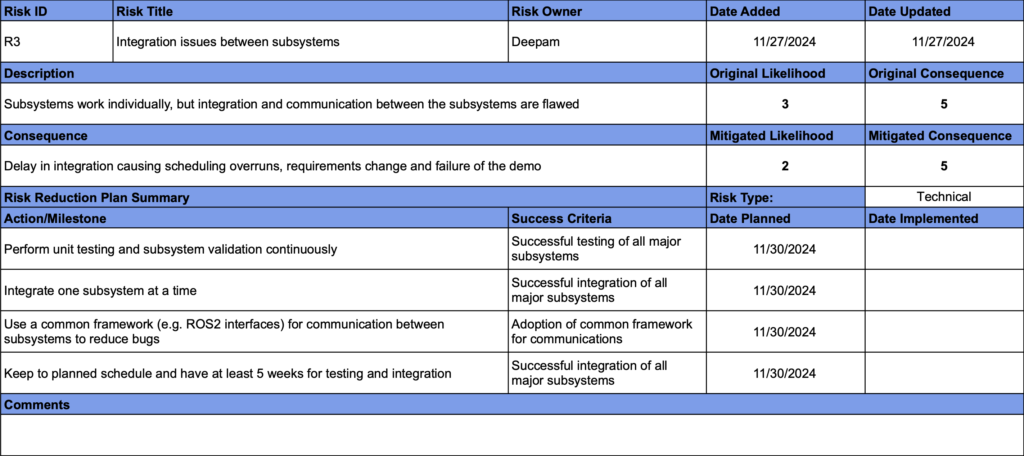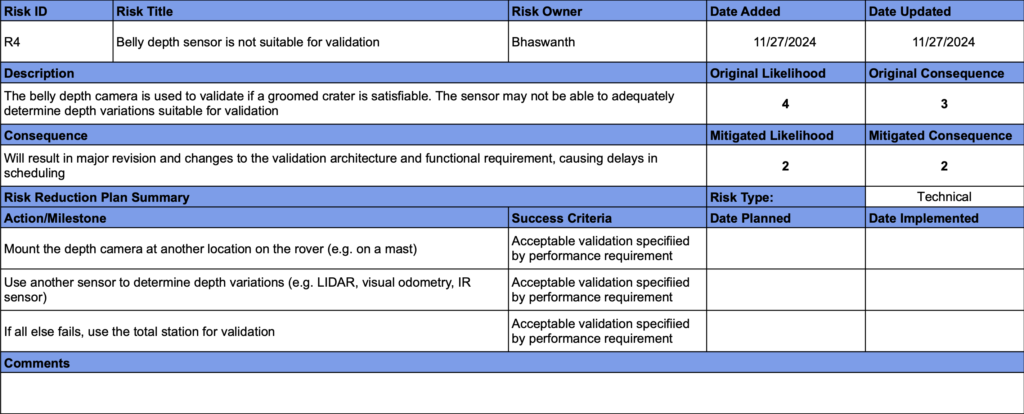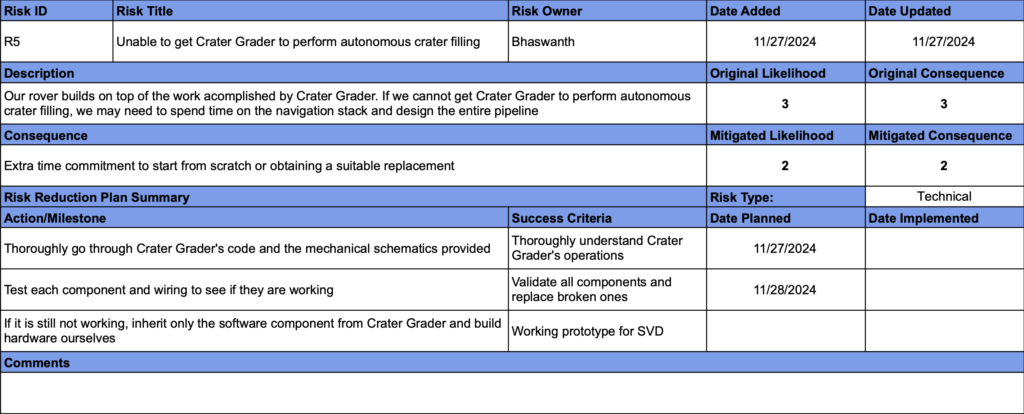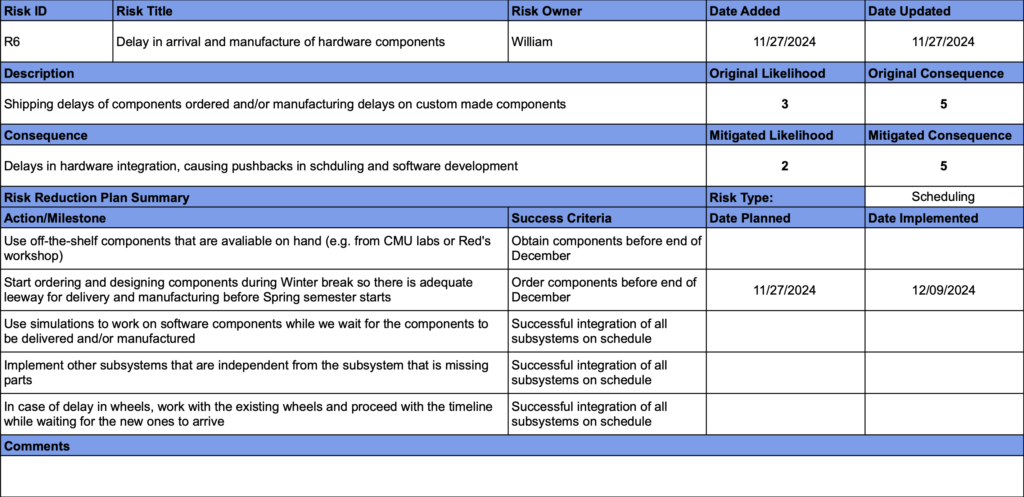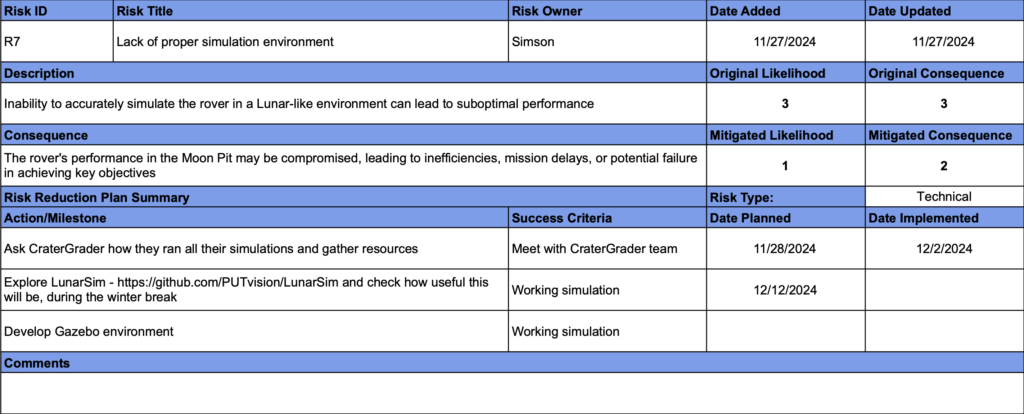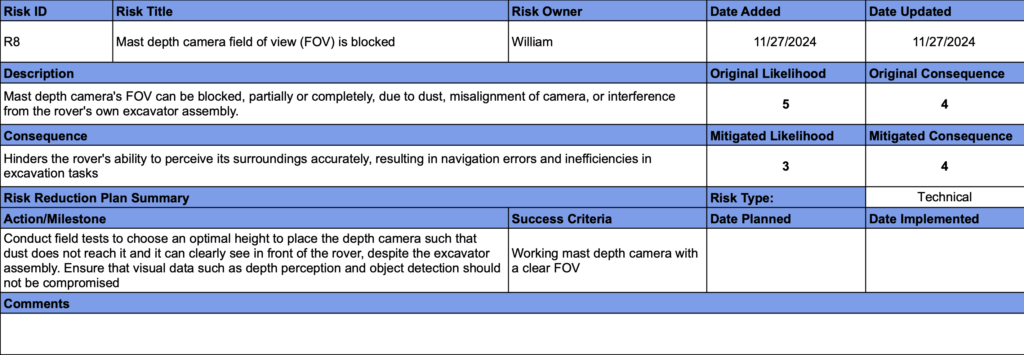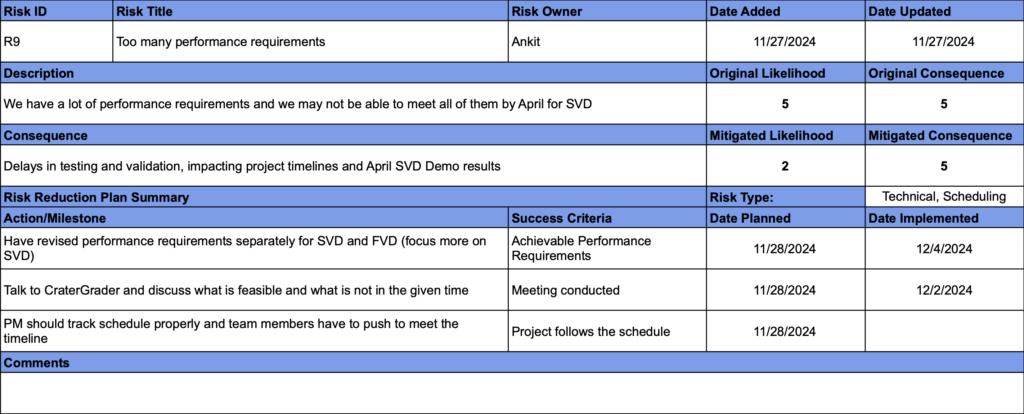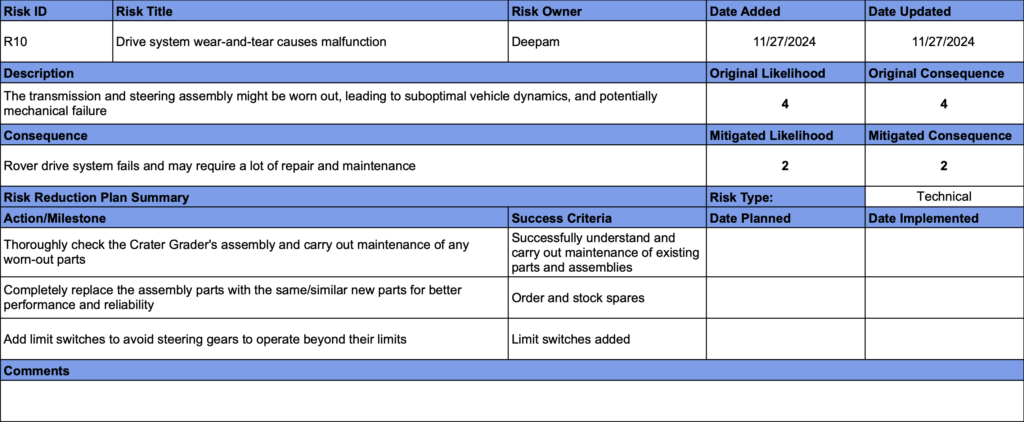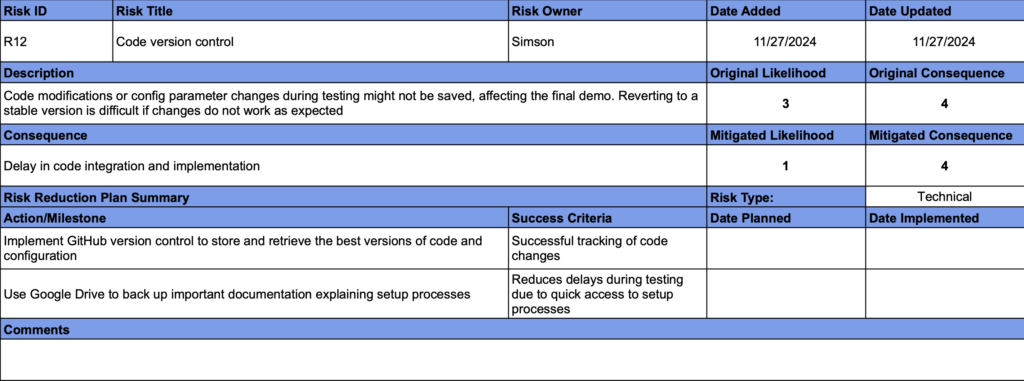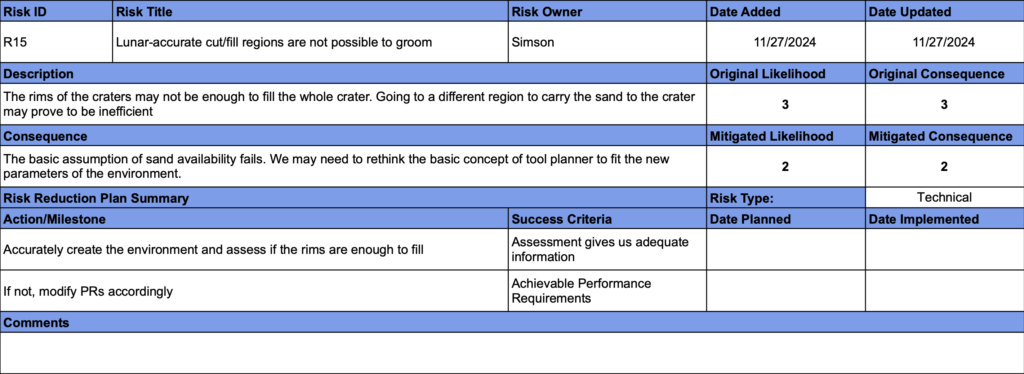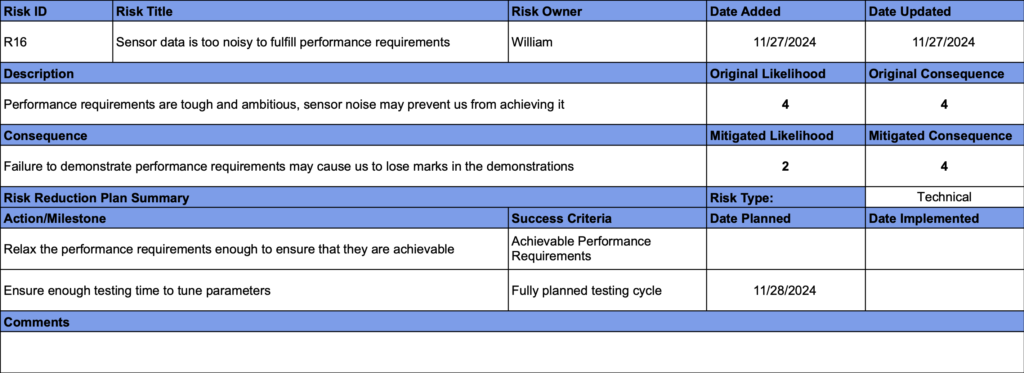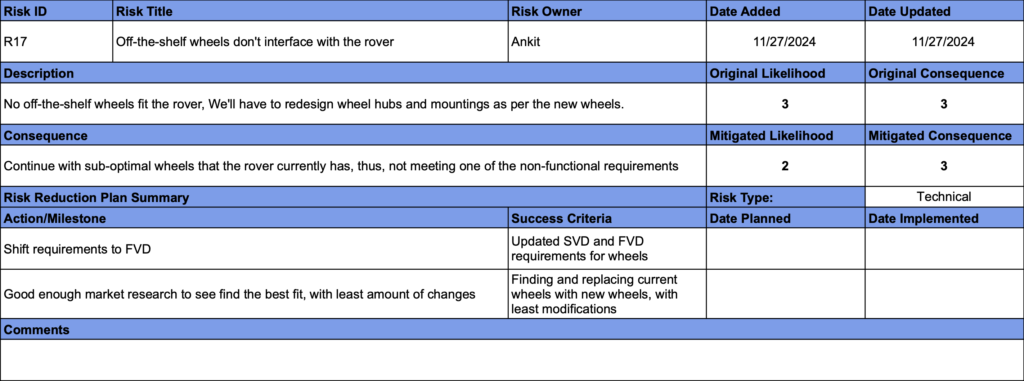Fall 2025 Risk Management Update
Date Updated: 12/03/2025
Risk Summary
Original

Reduced

Top 5 Risks





Spring 2025 Risk Management Update
Date Updated: 04/28/2025
Risk Summary
Original
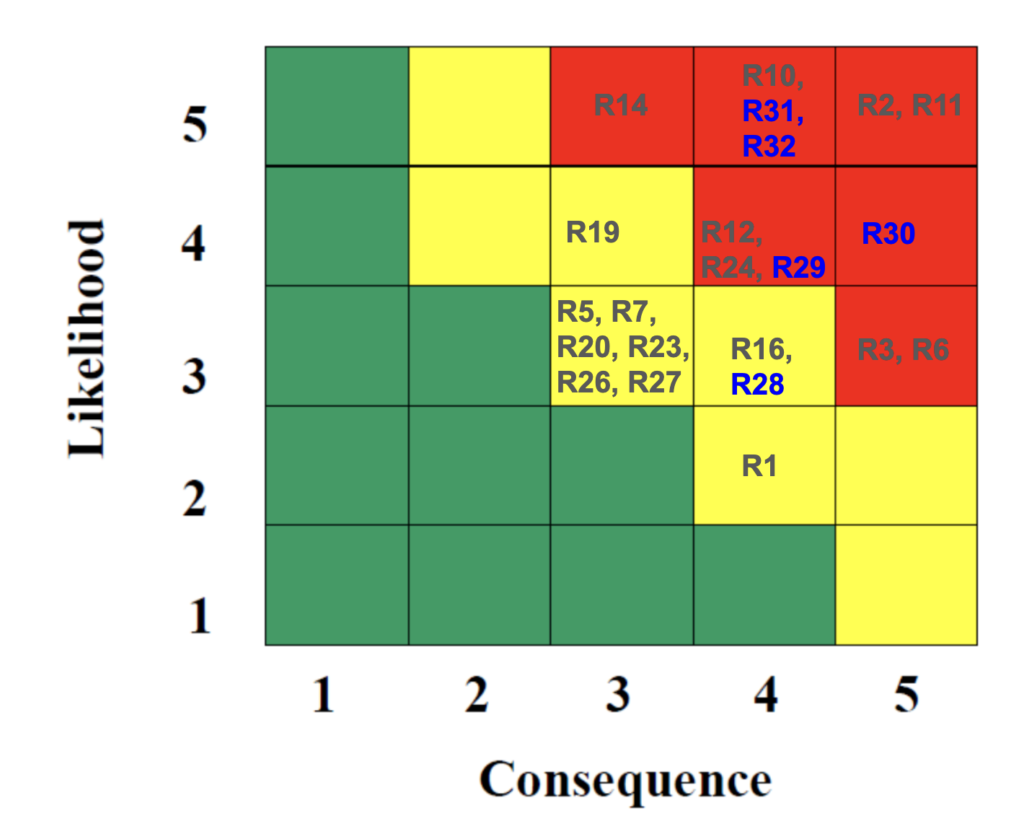
Reduced
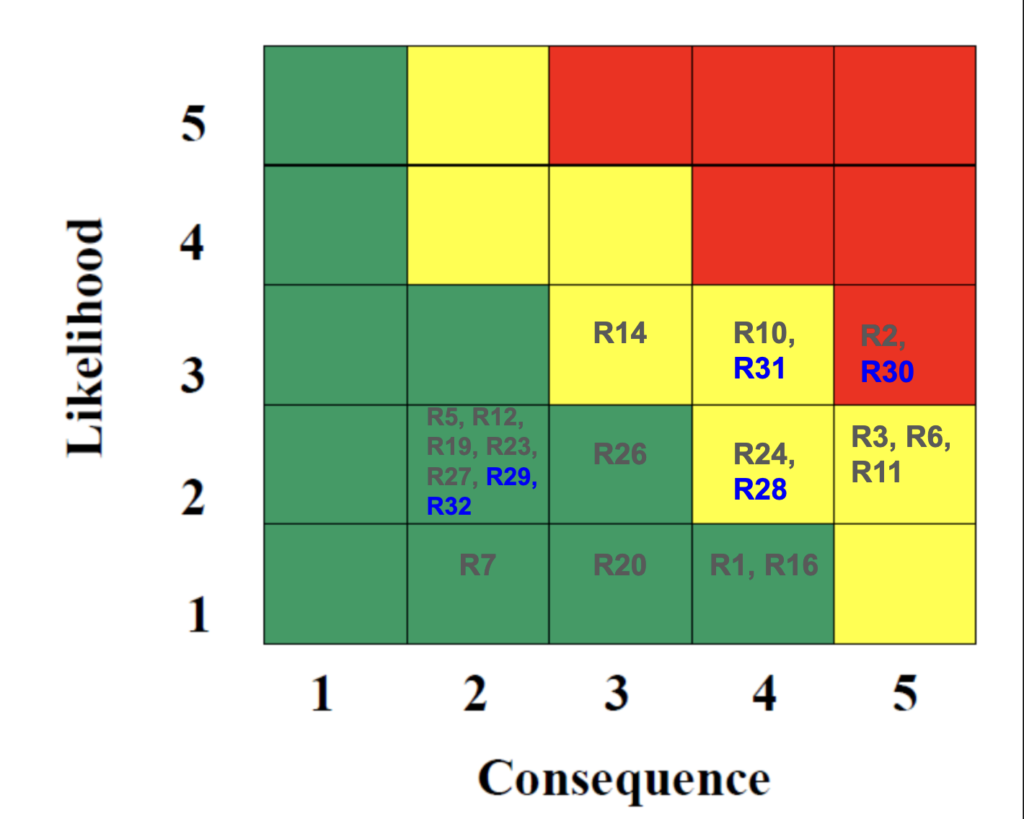
Top 5 Risks
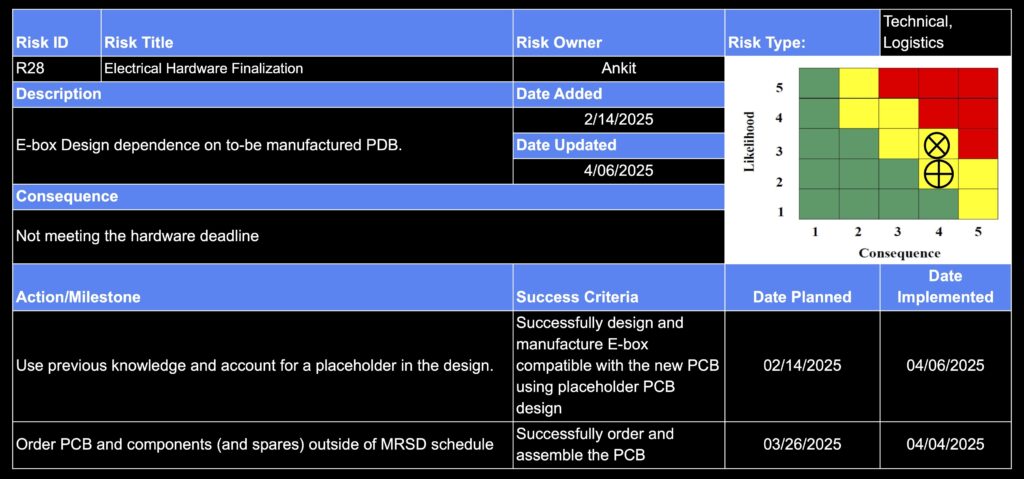
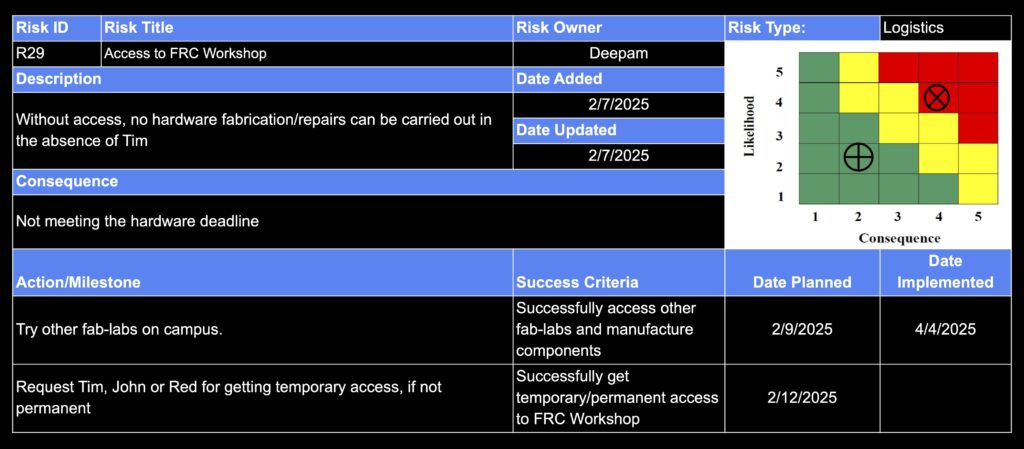
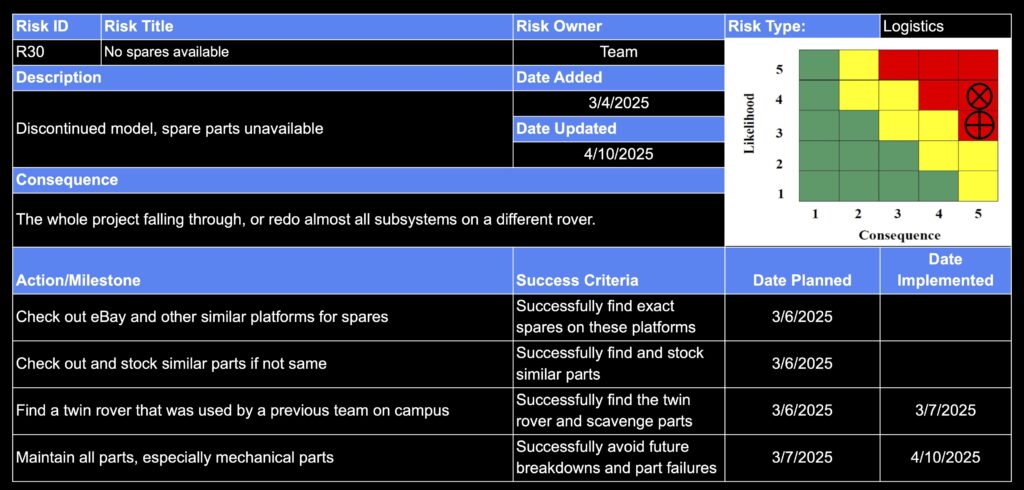
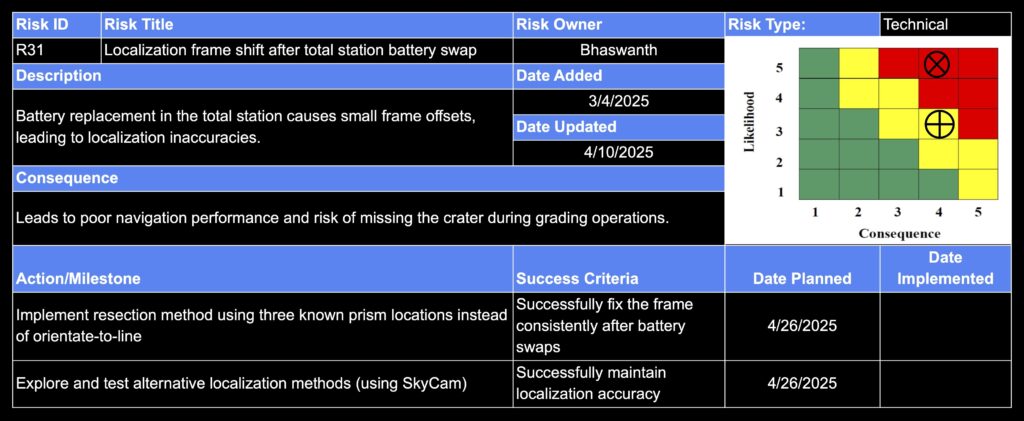
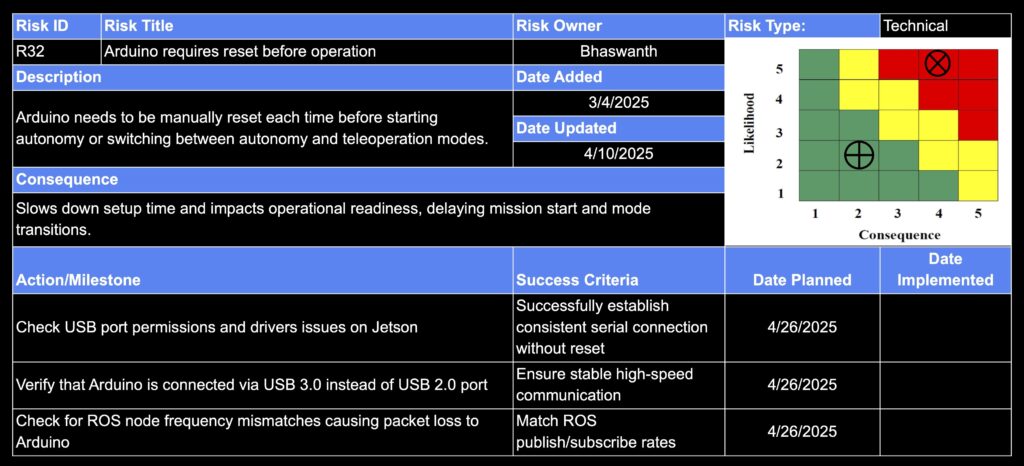
Fall 2024 Risk Management Update
Date Updated: 01/13/2025
Risk Summary
Original

Reduced

Top 5 Risks
1. Excavator and Grader Tool Planner takes Longer than Expected to Deliver
This risk has an unmitigated likelihood of 5 and consequence of 5. Our autonomous trail grooming rover requires the use of both an excavator tool and a grader tool. This requires the integration of both the hardware and software components for each tool. If integration takes longer than expected, we may be unable to meet the SVD deadline, thus requiring us to make changes in our performance requirements.
The first mitigation action taken was to shift requirements for SVD and only integrate the grader during Fall semester. This was decided upon and implemented on Nov 28th, 2024 and the performance requirements were updated accordingly. A second action is to potentially use off-the-shelf code if available, preferably from Crater Grader. The adoption of these actions results in a mitigated likelihood of 2 and consequence of 5.
2. Integration Issues between Subsystems
This risk has an unmitigated likelihood of 3 and consequence of 5. Since our rover has many complex moving parts, subsystem integration and communication between the subsystems may be flawed. This could result in integration delays causing scheduling overruns, requirement changes and failure of the demo.
Some mitigation actions we planned to act upon include performing unit testing and subsystem validation continuously while only integrating one subsystem at a time. Additionally, we plan to use a common framework (e.g. ROS2 interfaces) for communication between subsystems and to have at least 5 weeks for testing and integration. The adoption of these actions results in a mitigated likelihood of 2 and consequence of 5.
3. Delay in Arrival and Manufacture of Hardware Components
This risk has an unmitigated likelihood of 3 and consequence of 5. Shipping delays of components ordered and/or manufacturing delays on custom made components can severely delay hardware integration, causing push backs in scheduling, software development, and potentially failing to meet performance requirements.
Our first mitigation action is to order and design components during Winter break. We completed the ordering on Dec 9th, 2024 and will start designing components on the 12th. We also plan to use off-the-shelf components to reduce lead times. The adoption of these actions results in a mitigated likelihood of 2 and consequence of 5.
4. Mast Depth Camera Field of View (FOV) is Blocked
This risk has an unmitigated likelihood of 5 and consequence of 4. The mast depth camera’s FOV can be blocked, partially or completely, due to dust, misalignment of camera, or interference from the rover’s own excavator assembly. This hinders the rover’s ability to perceive its surroundings accurately, resulting in navigation errors and inefficiencies in excavation tasks.
To mitigate this, we plan to conduct field tests to choose an optimal height to place the depth camera such that dust does not reach it and it can clearly see in front of the rover, despite the presence of the excavator assembly. The adoption of these actions results in a mitigated likelihood of 3 and consequence of 4.
5. Too Many Performance Requirements
This risk has an unmitigated likelihood of 5 and consequence of 5. We originally had 9 performance requirements scheduled for SVD. Delays in testing and validation may impact project timelines and we may not be able to meet all the requirements for SVD.
To reduce this risk, we met with the Crater Grader MRSD ’22 team on Dec 2nd, 2024 to discuss what is feasible in the given time. We then had a team meeting on Dec 4th, 2024 and agreed to revise the performance requirements down to 6. We further undertook revisions of our schedule and plan to follow it diligently. The adoption of these actions results in a mitigated likelihood of 2 and consequence of 5.
Risk Management Table
A full list of identified risks is shown below. We also provide a preliminary mitigation plan for each identified risk and any actions that are taken to address each risk.
